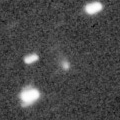
|
It brightened up to 15.1 mag in February (Feb. 1, Ken-ichi Kadota). It is expected to brighten up to 4.5 mag in April. However, it is not observable now. In the Northern Hemisphere, it will appear at 6 mag in mid May, and it stays observable in good condition after that while the comet will be fading. In the Southern Hemisphere, it is not observable until August.
Date(TT) R.A. (2000) Decl. Delta r Elong. m1 Best Time(A, h)
Apr. 2 1 12.27 -1 6.8 1.590 0.624 9 9.0 19:47 (100,-16)
Apr. 9 1 43.87 -1 7.8 1.396 0.466 12 7.4 19:54 (101,-16)
|
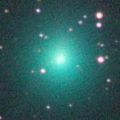
|
Brightened very rapidly. Now it is very bright as 9.3 mag (Mar. 24, Michael Jager). Now it is not observable. In the Southern Hemisphere, it will appear in the morning sky in late May. Then it stays observable in good condition after that. In the Northern Hemisphere, it will never be observable again.
Date(TT) R.A. (2000) Decl. Delta r Elong. m1 Best Time(A, h)
Apr. 2 0 54.14 26 52.0 1.849 0.999 22 9.3 19:47 (125, -2)
Apr. 9 1 12.10 23 15.2 1.921 0.996 15 9.4 19:54 (125, -7)
|

|
Now it is 9.9 mag (Mar. 22, Chris Wyatt). It will be getting lower after this. In the Northern Hemisphere, it will be unobservable in May. In the Southern Hemisphere, it stays observable until July.
Date(TT) R.A. (2000) Decl. Delta r Elong. m1 Best Time(A, h)
Apr. 2 6 43.11 16 30.2 3.519 3.633 88 10.1 19:47 ( 59, 60)
Apr. 9 6 47.20 15 34.5 3.636 3.647 82 10.2 19:54 ( 66, 54)
|
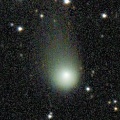
|
Now it is bright as 11.1 mag (Mar. 16, Ken-ichi Kadota). The brightness evolution is slower than originally expected. It is expected to be observable at 7 mag for a long time from 2022 to 2023. In the Northern Hemisphere, it stays observable in good condition until autumn. However, it is not observable at the high light from autumn to 2023 summer. In the Southern Hemisphere, it stays observable in good condition after this.
Date(TT) R.A. (2000) Decl. Delta r Elong. m1 Best Time(A, h)
Apr. 2 18 54.26 11 37.6 3.492 3.574 86 10.4 4:20 (305, 55)
Apr. 9 18 55.12 11 43.0 3.330 3.510 91 10.2 4:09 (310, 58)
|
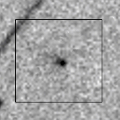
|
Now it is 12.4 mag (Mar. 16, Thomas Lehmann). In the Northern Hemisphere, it stays extremely low until spring. In the Southern Hemisphere, it stays observable at 11 mag until June.
Date(TT) R.A. (2000) Decl. Delta r Elong. m1 Best Time(A, h)
Apr. 2 21 38.61 -13 34.3 2.012 1.560 49 10.9 4:20 (293, 8)
Apr. 9 21 58.67 -12 7.8 1.986 1.568 51 10.9 4:09 (291, 9)
|
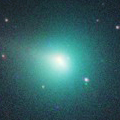
|
Now it is bright as 10.2 mag (Mar. 25, Osamu Miyazaki). It will be fading after this. In the Northern Hemisphere, it stays observable in excellent condition for a long time. In the Southern Hemisphere, it stays extremely low after this.
Date(TT) R.A. (2000) Decl. Delta r Elong. m1 Best Time(A, h)
Apr. 2 4 27.03 37 4.6 1.697 1.481 60 10.9 19:47 (111, 42)
Apr. 9 4 52.98 39 5.8 1.768 1.521 59 11.3 19:54 (114, 41)
|

|
It has not been observed yet in this apparition. It will brighten very rapidly up to 9 mag in May. The condition is very bad in this apparition. It is observable only in the extremely low sky from mid May to mid July in the Northern Hemisphere, or from early June to early August in the Southern Hemisphere.
Date(TT) R.A. (2000) Decl. Delta r Elong. m1 Best Time(A, h)
Apr. 2 0 18.30 -0 1.9 1.709 0.732 7 12.2 4:20 (259,-16)
Apr. 9 0 56.52 4 13.0 1.646 0.652 4 11.0 4:09 (252,-17)
|
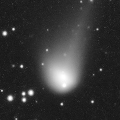
|
Now it is bright as 12.3 mag (Mar. 22, Chris Wyatt). It stays 11-12 mag until July. It stas observable in good condition for a long time. It locates high after this also in the Northern Hemisphere.
Date(TT) R.A. (2000) Decl. Delta r Elong. m1 Best Time(A, h)
Apr. 2 11 51.00 -21 14.3 3.332 4.280 159 11.5 23:08 ( 0, 34)
Apr. 9 11 48.59 -19 40.0 3.334 4.273 156 11.5 22:38 ( 0, 35)
|
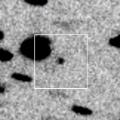
|
Now it is 13.4 mag (Mar. 4, Thomas Lehmann). It stays 12-13 mag for a while. But actually, it is fainter than this ephemeris recently. It is observable in excellent condition in the Southern Hemisphere. It locates low until May in the Northern Hemisphere.
Date(TT) R.A. (2000) Decl. Delta r Elong. m1 Best Time(A, h)
Apr. 2 20 20.30 -22 34.6 1.601 1.569 69 12.2 4:20 (313, 15)
Apr. 9 20 40.22 -22 16.5 1.568 1.582 72 12.2 4:09 (312, 15)
|
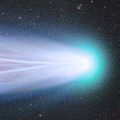
|
It brightened up to 3 mag from mid December to late December. Now it is fading. It has already faded down to 11.8 mag (Mar. 16, Thomas Lehmann). It is observable in good condition in the Southern Hemisphere. It will be observable soon also in the Northern Hemisphere.
Date(TT) R.A. (2000) Decl. Delta r Elong. m1 Best Time(A, h)
Apr. 2 21 2.05 -35 32.7 1.935 1.775 65 12.4 4:20 (315, 0)
Apr. 9 20 53.55 -36 1.9 1.889 1.878 73 12.6 4:09 (319, 3)
|
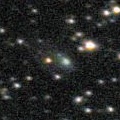
|
Now it is 11.3 mag (Mar. 16, Thomas Lehmann). It will brighten up to 11 mag from spring to summer. In the Southen Hemisphere, it stays observable in good condition for a long time after this. In the Northern Hemisphere, it is hardly observable after this.
Date(TT) R.A. (2000) Decl. Delta r Elong. m1 Best Time(A, h)
Apr. 2 20 50.25 -26 36.2 2.209 1.995 64 12.7 4:20 (310, 8)
Apr. 9 20 58.87 -29 37.6 2.047 1.957 70 12.5 4:09 (314, 7)
|

|
Now it is 14.1 mag (Mar. 22, Chris Wyatt). It was expected to brighten up to 13 mag in spring. But actually, it is fainter than this ephemeris recently. In the Southern Hemisphere, it stays observable in good condition for a long time. In the Northern Hemisphere, it is not observable until autumn.
Date(TT) R.A. (2000) Decl. Delta r Elong. m1 Best Time(A, h)
Apr. 2 7 7.58 -62 11.9 2.942 3.219 96 13.4 19:47 ( 10, -9)
Apr. 9 6 53.27 -59 26.3 2.970 3.204 94 13.4 19:54 ( 16, -8)
|
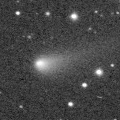
|
Now it is 13.1 mag (Mar. 24, Mitsunori Tsumura). It is observable at 13 mag in good condition until early summer.
Date(TT) R.A. (2000) Decl. Delta r Elong. m1 Best Time(A, h)
Apr. 2 9 24.84 18 57.5 1.589 2.318 125 13.6 20:42 ( 0, 74)
Apr. 9 9 26.25 18 32.9 1.643 2.303 119 13.6 20:16 ( 0, 73)
|
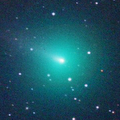
|
It brightened very rapidly up to 9.2 mag in winter (Jan. 31, Chris Wyatt). Now it is fading. But it is still bright as 11.2 mag (Mar. 22, Chris Wyatt). It will be fainter than 18 mag in May.
Date(TT) R.A. (2000) Decl. Delta r Elong. m1 Best Time(A, h)
Apr. 2 7 1.47 15 39.2 1.055 1.490 92 13.7 19:47 ( 50, 63)
Apr. 9 7 25.52 15 31.5 1.148 1.548 91 14.4 19:54 ( 54, 61)
|
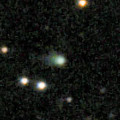
|
Now it is 14.5 mag (Mar. 23, Thomas Lehmann). It is expected to brighten up to 11 mag in 2023. In the Northern Hemisphere, it stays observable in good condition for a long time. In the Southern Hemisphere, it locates extremely low in 2022, but it will be observable in good condition in 2023.
Date(TT) R.A. (2000) Decl. Delta r Elong. m1 Best Time(A, h)
Apr. 2 16 12.34 40 57.3 4.327 4.823 114 13.9 3:32 (180, 84)
Apr. 9 16 2.85 41 52.3 4.248 4.784 116 13.8 2:56 (180, 83)
|
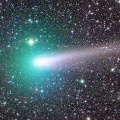
|
It brightened up to 8.5 mag from autumn to winter (Dec. 2, Toshihiko Ikemura, Hirohisa Sato). Now it is fading. It has already faded down to 13.3 mag (Mar. 22, Chris Wyatt). It stays observable in good condition for a long time.
Date(TT) R.A. (2000) Decl. Delta r Elong. m1 Best Time(A, h)
Apr. 2 8 44.04 23 15.2 1.468 2.099 115 13.9 20:02 ( 0, 78)
Apr. 9 8 51.08 22 25.8 1.593 2.154 110 14.2 19:54 ( 13, 77)
|

|
Now it is fainter than 14.3 mag (Mar. 22, Chris Wyatt). It is observable until April in the Southern Hemisphere, or until May in the Northern Hemisphere.
Date(TT) R.A. (2000) Decl. Delta r Elong. m1 Best Time(A, h)
Apr. 2 4 36.45 29 2.9 6.408 5.972 60 13.9 19:47 (100, 41)
Apr. 9 4 41.10 29 2.7 6.505 5.974 54 13.9 19:54 (104, 35)
|
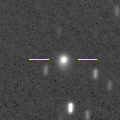
|
Now it is 13.9 mag (Mar. 24, Thomas Lehmann). It is expected to brighten up to 10 mag in 2023. In the Northern Hemisphere, it stays observable in good condition until 2023 autumn. In the Southern Hemipshere, it stays unobservable until 2023 summer.
Date(TT) R.A. (2000) Decl. Delta r Elong. m1 Best Time(A, h)
Apr. 2 11 25.93 61 1.0 4.286 4.760 112 13.9 22:42 (180, 64)
Apr. 9 11 10.47 61 24.5 4.305 4.703 107 13.9 21:59 (180, 64)
|

|
Now it is 15.8 mag (Mar. 15, Slooh.com Chile Observatory). It will brighten up to 13 mag in summer.
Date(TT) R.A. (2000) Decl. Delta r Elong. m1 Best Time(A, h)
Apr. 2 18 47.04 -26 37.0 2.886 3.077 91 14.1 4:20 (334, 23)
Apr. 9 18 53.19 -26 50.4 2.786 3.072 96 14.0 4:09 (336, 24)
|

|
Now it is 15.7 mag (Feb. 2, Thomas Lehmann). It will brighten up to 12.5 mag in summer. In the Southern Hemisphere, it stays observable in excellent condition for a long time. In the Northern Hemisphere, it is not observable until August.
Date(TT) R.A. (2000) Decl. Delta r Elong. m1 Best Time(A, h)
Apr. 2 22 47.10 -54 1.7 3.711 3.387 63 14.1 4:20 (319,-26)
Apr. 9 22 48.39 -54 5.6 3.594 3.354 68 14.0 4:09 (320,-24)
|
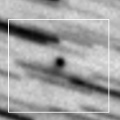
|
Now it is 13.6 mag (Mar. 21, Thomas Lehmann). It is expected to brighten up to 11 mag in summer. In the Northern Hemisphere, it stays observable in good condition until June when it brightens up to 11 mag. But it is not observable after the high light. In the Souther Hemisphere, it is not observable until October.
Date(TT) R.A. (2000) Decl. Delta r Elong. m1 Best Time(A, h)
Apr. 2 1 25.68 56 18.9 2.573 2.115 52 14.3 19:47 (145, 21)
Apr. 9 1 50.75 57 18.3 2.516 2.033 50 14.1 19:54 (147, 20)
|
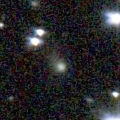
|
Now it is 15.1 mag (Mar. 24, Thomas Lehmann). It is expected to brighten up to 11 mag in 2023. In the Northern Hemisphere, it stays observable in good condition until November. But it becomes unobservable after that. In the Southern Hemisphere, it stays observable in good condition after this.
Date(TT) R.A. (2000) Decl. Delta r Elong. m1 Best Time(A, h)
Apr. 2 19 2.39 18 11.0 4.852 4.853 84 14.7 4:20 (294, 58)
Apr. 9 19 2.79 18 23.9 4.714 4.806 89 14.5 4:09 (298, 61)
|

|
It brightened up to 12.3 mag from spring to summer (June 15, Marco Goiato). Now it is fading. It has already faded down to 14.4 mag (Mar. 22, Thomas Lehmann).
Date(TT) R.A. (2000) Decl. Delta r Elong. m1 Best Time(A, h)
Apr. 2 13 21.29 26 22.5 3.740 4.616 147 14.6 0:42 ( 0, 81)
Apr. 9 13 10.96 27 47.6 3.803 4.657 144 14.7 0:05 ( 0, 83)
|

|
Now it is 15.8 mag (Mar. 20, ATLAS Chile). It stays at 15-16 mag for a long time. In the Southern Hemisphere, it stays observable in excellent condition for a long time. In the Northern Hemiphere, it locates extremely low in spring.
Date(TT) R.A. (2000) Decl. Delta r Elong. m1 Best Time(A, h)
Apr. 2 17 10.37 -42 37.6 4.691 5.124 110 15.0 4:20 (358, 12)
Apr. 9 17 4.79 -43 52.7 4.599 5.136 117 14.9 3:58 ( 0, 11)
|
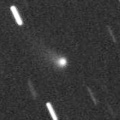
|
Now it is 14.6 mag (Mar. 22, Thomas Lehmann). It became brighter after the perihelion passage. It stays observable at 14-15 mag for a long time.
Date(TT) R.A. (2000) Decl. Delta r Elong. m1 Best Time(A, h)
Apr. 2 11 9.23 7 53.8 2.798 3.718 153 15.1 22:26 ( 0, 63)
Apr. 9 10 59.00 7 11.9 2.897 3.757 144 15.3 21:48 ( 0, 62)
|
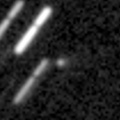
|
Now it is 17.2 mag (Mar. 29, Katsumi Yoshimoto). It is expected to brighten up to 11 mag from summer to autumn. It stays observable in good condition in the Southern Hemisphere. In the Northern Hemisphere, it becomes extremely low from August to September.
Date(TT) R.A. (2000) Decl. Delta r Elong. m1 Best Time(A, h)
Apr. 2 9 49.55 31 59.1 1.314 2.054 124 15.4 21:07 ( 0, 87)
Apr. 9 9 43.93 31 40.5 1.322 1.992 117 15.2 20:34 ( 0, 87)
|
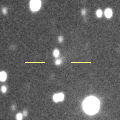
|
Now it is 15.3 mag (Mar. 9, Ken-ichi Kadota). It continues brightening even after the perihelion passage. It is observable at 15 mag in good condition for a while.
Date(TT) R.A. (2000) Decl. Delta r Elong. m1 Best Time(A, h)
Apr. 2 10 20.09 -4 36.2 1.591 2.472 144 15.4 21:38 ( 0, 50)
Apr. 9 10 22.92 -1 56.3 1.658 2.496 138 15.5 21:13 ( 0, 53)
|
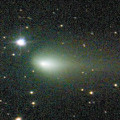
|
It brightened up to 10.6 mag in autumn (Oct. 10, Osamu Miyazaki). Now it is fading. It has already faded down to 13.8 mag (Mar. 22, Thomas Lehmann). It stays observable in good condition for a long time.
Date(TT) R.A. (2000) Decl. Delta r Elong. m1 Best Time(A, h)
Apr. 2 7 2.23 14 33.5 2.254 2.517 93 15.7 19:47 ( 49, 62)
Apr. 9 7 10.85 14 44.5 2.384 2.560 88 16.0 19:54 ( 58, 58)
|
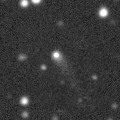
|
Now it is 15.9 mag (Mar. 6, Toshihiko Ikemura, Hirohisa Sato). It stays observable at 16 mag from 2021 to 2022.
Date(TT) R.A. (2000) Decl. Delta r Elong. m1 Best Time(A, h)
Apr. 2 16 19.23 30 39.0 4.376 4.920 117 15.8 3:39 ( 0, 86)
Apr. 9 16 17.33 32 29.8 4.357 4.937 120 15.8 3:10 ( 0, 87)
|
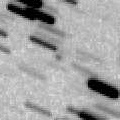
|
It is expected to brighten up to 13.5 mag in early summer. In the Southern Hemisphere, it will appear in the morning sky in May. Then it stays observable in good condition after that. In the Northern Hemisphere, it is not observable at all.
Date(TT) R.A. (2000) Decl. Delta r Elong. m1 Best Time(A, h)
Apr. 2 1 45.59 -5 14.4 2.520 1.603 18 16.1 19:47 ( 92,-12)
Apr. 9 1 52.55 -6 39.2 2.465 1.541 17 15.8 19:54 ( 95,-18)
|
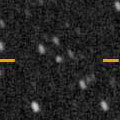
|
Now it is 16.1 mag (Mar. 21, D. Buczynski). It will approach to Earth down to 0.29 a.u. in 2023 February, and it is expected to brighten up to 5 mag. In the Northern Hemisphere, it stays observable in excellent condition. In the Southern Hemisphere, it becomes unobservable from late September to early February.
Date(TT) R.A. (2000) Decl. Delta r Elong. m1 Best Time(A, h)
Apr. 2 20 11.58 6 47.4 4.231 3.961 67 16.1 4:20 (291, 38)
Apr. 9 20 13.21 8 11.3 4.057 3.889 73 15.9 4:09 (293, 42)
|
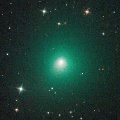
|
It brightened up to 9.5 mag in early summer in 2021 (June 27, Marco Goiato). Now it is fading. It has faded down to 12.7 mag in autumn (Nov. 22, Thomas Lehmann). In the Southern Hemisphere, it is appearing in the morning sky. In the Northern Hemisphere, it is not observable until June when the comet will fade down to 17 mag.
Date(TT) R.A. (2000) Decl. Delta r Elong. m1 Best Time(A, h)
Apr. 2 22 17.12 -30 47.4 4.172 3.610 49 16.0 4:20 (301, -9)
Apr. 9 22 26.06 -30 42.8 4.157 3.669 54 16.1 4:09 (302, -8)
|

|
Now it is 19.2 mag (Feb. 28, Hidetaka Sato). It was expected to be observable at 16 mag in good condition in spring. But actually, it is fainter than predicted by 3 mag.
Date(TT) R.A. (2000) Decl. Delta r Elong. m1 Best Time(A, h)
Apr. 2 19 23.39 -26 55.3 1.148 1.432 83 16.1 4:20 (326, 19)
Apr. 9 19 43.73 -24 28.7 1.115 1.437 85 16.1 4:09 (324, 21)
|
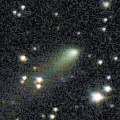
|
Now it is 16.4 mag (Mar. 22, Thomas Lehmann). It will be fading after this. In the Northern Hemisphere, it stays observable in good condition for a long time. It locates low in the Southern Hemisphere.
Date(TT) R.A. (2000) Decl. Delta r Elong. m1 Best Time(A, h)
Apr. 2 13 34.96 45 16.7 2.327 3.054 128 16.1 0:57 (180, 80)
Apr. 9 13 8.22 45 32.9 2.393 3.101 127 16.3 0:03 (180, 80)
|
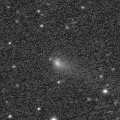
|
Now it is 15.8 mag (Mar. 24, Thomas Lehmann). It is bright as 14.8 mag visually (Mar. 1, Sandor Szabo). It will be fading after this, and it will be fainter than 18 mag in June.
Date(TT) R.A. (2000) Decl. Delta r Elong. m1 Best Time(A, h)
Apr. 2 11 26.08 13 52.3 1.398 2.334 153 16.3 22:43 ( 0, 69)
Apr. 9 11 23.60 14 0.8 1.462 2.361 146 16.4 22:13 ( 0, 69)
|
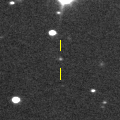
|
Now it is 17.0 mag (Mar. 22, Thomas Lehmann). It will brighten up to 11.5 mag in 2022 winter. It stays observable while the comet will be brightening slowly.
Date(TT) R.A. (2000) Decl. Delta r Elong. m1 Best Time(A, h)
Apr. 2 3 54.22 17 54.7 3.324 2.763 48 16.5 19:47 ( 94, 27)
Apr. 9 4 3.90 18 28.4 3.355 2.722 43 16.4 19:54 ( 97, 23)
|
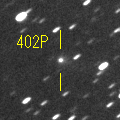
|
First return of a new periodic comet observed at 16 mag from 2003 to 2004. Now it is 16.5 mag (Mar. 4, ATLAS-MLO, Mauna Loa). It will be unobservable in June. But it will become observable again at 17 mag from autum to winter.
Date(TT) R.A. (2000) Decl. Delta r Elong. m1 Best Time(A, h)
Apr. 2 6 15.73 14 47.7 4.001 3.987 82 16.5 19:47 ( 65, 54)
Apr. 9 6 20.75 15 28.1 4.109 3.993 76 16.6 19:54 ( 72, 49)
|
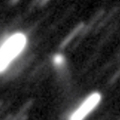
|
Now it is 16.2 mag (Mar. 17, D. Buczynski). It was observed at 15 mag in 2021. Now it is fading. It stays observable at 16-17 mag for a while in 2022.
Date(TT) R.A. (2000) Decl. Delta r Elong. m1 Best Time(A, h)
Apr. 2 18 46.37 12 54.1 5.076 5.145 88 16.6 4:20 (306, 57)
Apr. 9 18 47.26 14 27.5 5.004 5.163 93 16.6 4:09 (310, 61)
|

|
It brightened up to 14 mag from 2020 to 2021. Now it is fading slowly. It is observable at 16.5-17 mag in 2022.
Date(TT) R.A. (2000) Decl. Delta r Elong. m1 Best Time(A, h)
Apr. 2 23 17.27 -18 15.4 4.329 3.514 31 16.6 4:20 (283,-14)
Apr. 9 23 26.13 -17 34.0 4.297 3.532 35 16.6 4:09 (283,-12)
|
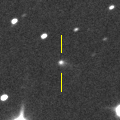
|
Now it is 16.9 mag (Mar. 8, Michael Jager). It will brighten up to 14 mag in early 2023. It becomes unobservable temporarily in May. But it will appear in the morning sky again in August.
Date(TT) R.A. (2000) Decl. Delta r Elong. m1 Best Time(A, h)
Apr. 2 4 43.12 10 56.8 4.843 4.420 59 16.7 19:47 ( 79, 34)
Apr. 9 4 48.87 11 34.9 4.891 4.381 54 16.7 19:54 ( 85, 28)
|
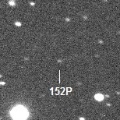
|
It will brighten up to 16 mag from spring to summer. It locates somewhat low in the Northern Hemisphere.
Date(TT) R.A. (2000) Decl. Delta r Elong. m1 Best Time(A, h)
Apr. 2 19 28.11 -21 54.3 3.110 3.124 81 16.8 4:20 (323, 23)
Apr. 9 19 35.03 -21 54.6 3.020 3.129 86 16.7 4:09 (325, 24)
|
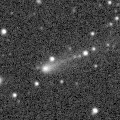
|
It brightened rapidly up to 14.5 mag in winter (Feb. 9, Toshiyuki Takahashi). Now it is fading rapidly. It has already faded down to 16.3 mag (Mar. 22, Thomas Lehmann). It will be fainter than 18 mag in May.
Date(TT) R.A. (2000) Decl. Delta r Elong. m1 Best Time(A, h)
Apr. 2 7 59.69 12 33.6 2.178 2.653 107 16.7 19:47 ( 18, 67)
Apr. 9 8 4.54 12 16.2 2.278 2.669 101 16.9 19:54 ( 34, 64)
|
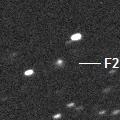
|
Now it is 17.0 mag (Mar. 12, ATLAS-MLO, Mauna Loa). It stays observable at 17-18 mag for a long time until 2024.
Date(TT) R.A. (2000) Decl. Delta r Elong. m1 Best Time(A, h)
Apr. 2 14 11.94 -0 7.5 7.906 8.838 157 16.9 1:33 ( 0, 55)
Apr. 9 14 7.45 0 26.2 7.870 8.835 163 16.9 1:01 ( 0, 55)
|

|
Brightened rapidly up to 16.4 mag in autumn (Nov. 14, F. Kugel, M. Audejean, J. Nicolas, J.-G. Bosch). It stays 17 mag for a long time from 2021 to 2022. In the Southern Hemisphere, it stays observable in good condition for a long time. In the Northern Hemisphere, it locates extremely low, and it is observable only until April. It is fainter than this ephemeris recently, 17.9 mag (Mar. 3, J. Drummond).
Date(TT) R.A. (2000) Decl. Delta r Elong. m1 Best Time(A, h)
Apr. 2 6 43.86 -43 56.9 5.281 5.431 93 17.0 19:47 ( 19, 7)
Apr. 9 6 41.72 -43 21.0 5.347 5.441 90 17.0 19:54 ( 25, 5)
|

|
Now it is 16.9 mag (Mar. 6, Toshihiko Ikemura, Hirohisa Sato). Fading slowly. In the Northern Hemisphere, it stays observable in good condition for a long time. In the Southern Hemisphere, it is not observable after this.
Date(TT) R.A. (2000) Decl. Delta r Elong. m1 Best Time(A, h)
Apr. 2 19 24.77 57 50.9 9.213 9.103 80 17.0 4:20 (215, 57)
Apr. 9 19 24.68 58 55.5 9.203 9.113 81 17.0 4:09 (211, 58)
|
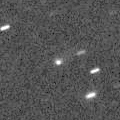
|
Now it is 16.9 mag (Mar. 12, ATLAS-MLO, Mauna Loa). It will be observable at 17 mag in good condition in spring.
Date(TT) R.A. (2000) Decl. Delta r Elong. m1 Best Time(A, h)
Apr. 2 13 31.93 -8 58.3 3.726 4.706 167 17.0 0:53 ( 0, 46)
Apr. 9 13 28.50 -8 42.7 3.708 4.706 175 17.0 0:22 ( 0, 46)
|
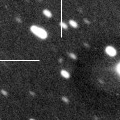
|
Now it is 16.9 mag (Mar. 8, Toshihiko Ikemura, Hirohisa Sato). It will brighten up to 13-14 mag from 2024 to 2025.
Date(TT) R.A. (2000) Decl. Delta r Elong. m1 Best Time(A, h)
Apr. 2 7 10.19 -27 58.0 7.993 8.192 98 17.1 19:47 ( 19, 24)
Apr. 9 7 11.29 -27 26.0 8.027 8.155 93 17.1 19:54 ( 27, 22)
|
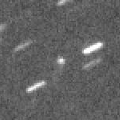
|
Now it is 17.1 mag (Mar. 4, A. Diepvens). It started fading before the perihelion passage. It was predicted to stay at 16 mag for a long time, but actually, it will be fainter than 18 mag in autumn. In the Northern Hemisphere, it stays observable in good condition for a long time. In the Southern Hemisphere, it is not observable until 2023.
Date(TT) R.A. (2000) Decl. Delta r Elong. m1 Best Time(A, h)
Apr. 2 0 3.35 74 58.1 3.977 3.763 70 17.3 4:20 (197, 30)
Apr. 9 0 8.74 75 7.5 4.013 3.760 68 17.4 4:09 (197, 30)
|
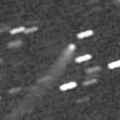
|
It brightened up to 14.2 mag from summer to autumn in 2021 (Sept. 3, C. S. Morris). Now it is 17.2 mag (Mar. 7, ATLAS-MLO, Mauna Loa). Fading slowly. In the Northern Hemisphere, it is observable in good condition. It is not observable in the Southern Hemisphere.
Date(TT) R.A. (2000) Decl. Delta r Elong. m1 Best Time(A, h)
Apr. 2 16 43.69 65 44.7 6.578 6.781 97 17.4 4:03 (180, 59)
Apr. 9 16 33.91 66 51.4 6.619 6.819 97 17.4 3:26 (180, 58)
|
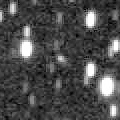
|
Now it is 17.5 mag (Mar. 11, ATLAS-MLO, Mauna Lao). It stayed 17.5 mag for a long time in 2021. It will be fading slowly after this. In the Northern Hemisphere, it is observable in good condition. It is not observable in the Southern Hemisphere.
Date(TT) R.A. (2000) Decl. Delta r Elong. m1 Best Time(A, h)
Apr. 2 12 12.13 71 0.5 6.872 7.181 104 17.5 23:28 (180, 54)
Apr. 9 12 3.07 70 25.4 6.930 7.195 101 17.5 22:52 (180, 55)
|
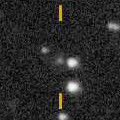
|
Now it is 17.6 mag (Mar. 14, Catalina Sky Survey). It is expected to brighten up to 12.5 mag in winter. It will become unobservable temporarily at 17 mag in July. In the Northern Hemisphere, it will become observable again in October. Then it stays observable in good condition after that. In the Southern Hemisphere, it is not observable at the high light.
Date(TT) R.A. (2000) Decl. Delta r Elong. m1 Best Time(A, h)
Apr. 2 11 1.00 -8 6.2 3.208 4.131 154 17.7 22:18 ( 0, 47)
Apr. 9 10 54.01 -6 10.7 3.195 4.067 146 17.6 21:43 ( 0, 49)
|
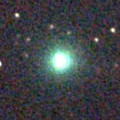
|
It brightened very rapidly, and brightened up to 8.9 mag (Sept. 11, Chris Wyatt). Now it is fading. It has already faded down to 19 mag (Mar. 19, WISE). In the Southern Hemisphere, it stays observable after this while the comet will be fading. It is not observable after this in the Northern Hemisphere.
Date(TT) R.A. (2000) Decl. Delta r Elong. m1 Best Time(A, h)
Apr. 2 17 58.21 -56 54.8 2.573 2.920 100 17.6 4:20 (352, -3)
Apr. 9 17 53.94 -57 11.1 2.544 2.985 106 17.8 4:09 (355, -3)
|
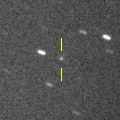
|
Now it is 17.4 mag (Mar. 3, Toshihiko Ikemura, Hirohisa Sato). It will brighten up to 16 mag in 2023. In the Southern Hemisphere, it stays observable in good condition for a long time. In the Northern Hemisphere, it is observable only until May.
Date(TT) R.A. (2000) Decl. Delta r Elong. m1 Best Time(A, h)
Apr. 2 9 46.71 -16 25.8 3.600 4.364 135 17.7 21:04 ( 0, 38)
Apr. 9 9 42.85 -16 25.7 3.625 4.323 128 17.7 20:32 ( 0, 38)
|
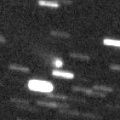
|
Now it is 17.1 mag (Feb. 28, Hidetaka Sato). It was observed at 16 mag from 2020 to 2021. Now it is fading. It will be fainter than 18 mag in May.
Date(TT) R.A. (2000) Decl. Delta r Elong. m1 Best Time(A, h)
Apr. 2 15 2.65 -41 54.4 5.406 6.116 131 17.7 2:24 ( 0, 13)
Apr. 9 14 54.03 -42 14.3 5.367 6.150 138 17.7 1:48 ( 0, 13)
|
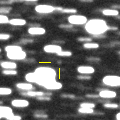
|
Now it is 17.2 mag (Mar. 8, Toshihiko Ikemura, Hirohisa Sato). It will brighten up to 15-16 mag in 2023. Cometary activity was detected by Cristovao Jacques on Dec. 12, and by Luca Buzzi and Andrea Aletti on Feb. 23.
Date(TT) R.A. (2000) Decl. Delta r Elong. m1 Best Time(A, h)
Apr. 2 6 22.01 -16 20.3 4.986 5.018 86 17.7 19:47 ( 36, 30)
Apr. 9 6 19.70 -15 24.6 5.046 4.973 80 17.7 19:54 ( 45, 26)
|
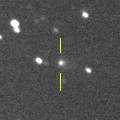
|
Now it is 17.7 mag (Mar. 8, Michael Jager). It continued brightening for a while even after the perihelion passage. It stays observable at 17 mag in good condition for a while.
Date(TT) R.A. (2000) Decl. Delta r Elong. m1 Best Time(A, h)
Apr. 2 4 50.62 0 11.9 4.538 4.159 61 17.7 19:47 ( 68, 28)
Apr. 9 4 56.39 1 3.9 4.640 4.178 56 17.8 19:54 ( 74, 23)
|

|
Now it is 17.8 mag (Mar. 2, Toshihiko Ikemura, Hirohisa Sato). In the Northern Hemisphere, it stays observable for a long time while it is getting fainter slowly. It locates extremely low in the Southern Hemisphere.
Date(TT) R.A. (2000) Decl. Delta r Elong. m1 Best Time(A, h)
Apr. 2 14 28.72 47 11.0 7.483 8.073 123 17.7 1:49 (180, 78)
Apr. 9 14 23.55 47 20.3 7.533 8.120 122 17.8 1:16 (180, 78)
|

|
It has not been observed yet in this apparition. appearing in the morning sky. It will brighten up to 15 mag in autumn, and it will be observable in good condition.
Date(TT) R.A. (2000) Decl. Delta r Elong. m1 Best Time(A, h)
Apr. 2 22 12.09 -8 55.6 3.284 2.602 40 17.8 4:20 (284, 5)
Apr. 9 22 23.94 -7 54.7 3.200 2.575 43 17.7 4:09 (284, 6)
|
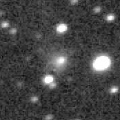
|
It was observed at 16 mag from 2020 to 2021. Now it is fading. It will be fainter than 18 mag in summer.
Date(TT) R.A. (2000) Decl. Delta r Elong. m1 Best Time(A, h)
Apr. 2 22 19.22 15 15.8 7.326 6.557 37 17.7 4:20 (263, 17)
Apr. 9 22 21.36 15 17.2 7.288 6.577 41 17.8 4:09 (265, 20)
|
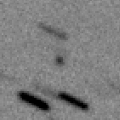
|
Now it is 17.8 mag (Feb. 27, Toshihiko Ikemura, Hirohisa Sato). It is observable in good condition in the Northern Hemisphere, but it locates low in the Southern Hemisphere. It will be fainter than 18 mag soon.
Date(TT) R.A. (2000) Decl. Delta r Elong. m1 Best Time(A, h)
Apr. 2 6 12.78 32 55.6 2.404 2.454 80 17.8 19:47 ( 96, 62)
Apr. 9 6 24.27 33 0.0 2.485 2.453 76 17.9 19:54 ( 98, 57)
|
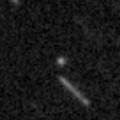
|
First return of a new periodic comet which brightened up to 16.5 mag in 1997. Now it is 17.2 mag (Mar. 27, Toshihiko Ikemura, Hirohisa Sato). It was fainter than originally predicted at the recovery, but it brightened very rapidly. It will be fading after this, and it will be fainter than 18 mag in April.
Date(TT) R.A. (2000) Decl. Delta r Elong. m1 Best Time(A, h)
Apr. 2 8 37.74 17 1.1 1.418 2.056 115 17.9 19:56 ( 0, 72)
Apr. 9 8 44.68 15 41.5 1.482 2.059 110 18.0 19:54 ( 13, 70)
|
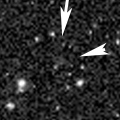
|
Now it is 17.9 mag (Feb. 18, J. L. Virlichie, P. Traverse, H. Roy). Very far object. It stays 18 mag for a long time from 2021 to 2026. In the Southern Hemisphere, it stays observable in good condition for a long time. In the Northern Hemisphere, it is not observable at all.
Date(TT) R.A. (2000) Decl. Delta r Elong. m1 Best Time(A, h)
Apr. 2 7 34.04 -66 10.4 10.578 10.786 99 18.0 19:47 ( 6,-12)
Apr. 9 7 31.02 -65 41.0 10.574 10.775 98 17.9 19:54 ( 10,-12)
|
|
![]()
 C/2019 T4 ( ATLAS )
C/2019 T4 ( ATLAS ) 9P/Tempel 1
9P/Tempel 1 C/2021 A1 ( Leonard )
C/2021 A1 ( Leonard ) C/2021 E3 ( ZTF )
C/2021 E3 ( ZTF ) C/2020 Y2 ( ATLAS )
C/2020 Y2 ( ATLAS ) 116P/Wild 4
116P/Wild 4 104P/Kowal 2
104P/Kowal 2 C/2019 U5 ( PanSTARRS )
C/2019 U5 ( PanSTARRS ) 67P/Churyumov-Gerasimenko
67P/Churyumov-Gerasimenko 29P/Schwassmann-Wachmann 1
29P/Schwassmann-Wachmann 1 C/2020 V2 ( ZTF )
C/2020 V2 ( ZTF ) 117P/Helin-Roman-Alu 1
117P/Helin-Roman-Alu 1 C/2020 R7 ( ATLAS )
C/2020 R7 ( ATLAS ) C/2021 P4 ( ATLAS )
C/2021 P4 ( ATLAS ) C/2020 K1 ( PanSTARRS )
C/2020 K1 ( PanSTARRS ) C/2020 J1 ( SONEAR )
C/2020 J1 ( SONEAR ) C/2018 U1 ( Lemmon )
C/2018 U1 ( Lemmon ) C/2020 M5 ( ATLAS )
C/2020 M5 ( ATLAS ) 73P/Schwassmann-Wachmann 3
73P/Schwassmann-Wachmann 3 C/2021 U5 ( Catalina )
C/2021 U5 ( Catalina ) 4P/Faye
4P/Faye C/2020 H6 ( ATLAS )
C/2020 H6 ( ATLAS ) C/2021 T2 ( Fuls )
C/2021 T2 ( Fuls ) C/2022 E3 ( ZTF )
C/2022 E3 ( ZTF ) C/2020 T2 ( Palomar )
C/2020 T2 ( Palomar ) 325P/Yang-Gao
325P/Yang-Gao C/2020 PV6 ( PanSTARRS )
C/2020 PV6 ( PanSTARRS ) 70P/Kojima
70P/Kojima 81P/Wild 2
81P/Wild 2 402P/2020 Q3 ( LINEAR )
402P/2020 Q3 ( LINEAR ) C/2020 O2 ( Amaral )
C/2020 O2 ( Amaral ) 246P/NEAT
246P/NEAT C/2020 S4 ( PanSTARRS )
C/2020 S4 ( PanSTARRS ) 152P/Helin-Lawrence
152P/Helin-Lawrence 110P/Hartley 3
110P/Hartley 3 C/2020 F2 ( ATLAS )
C/2020 F2 ( ATLAS ) C/2020 F7 ( Lemmon )
C/2020 F7 ( Lemmon ) C/2019 O3 ( Palomar )
C/2019 O3 ( Palomar ) 99P/Kowal 1
99P/Kowal 1 C/2021 G2 ( ATLAS )
C/2021 G2 ( ATLAS ) C/2020 U5 ( PanSTARRS )
C/2020 U5 ( PanSTARRS ) C/2019 K7 ( Smith )
C/2019 K7 ( Smith ) C/2020 P3 ( ATLAS )
C/2020 P3 ( ATLAS ) C/2022 A2 ( PanSTARRS )
C/2022 A2 ( PanSTARRS ) 8P/Tuttle
8P/Tuttle C/2021 C5 ( PanSTARRS )
C/2021 C5 ( PanSTARRS ) C/2017 Y2 ( PanSTARRS )
C/2017 Y2 ( PanSTARRS ) A/2021 X1
A/2021 X1 254P/McNaught
254P/McNaught C/2018 N2 ( ASASSN )
C/2018 N2 ( ASASSN ) 61P/Shajn-Schaldach
61P/Shajn-Schaldach C/2019 T3 ( ATLAS )
C/2019 T3 ( ATLAS ) 274P/Tombaugh-Tenagra
274P/Tombaugh-Tenagra 440P/2021 W2 ( Kobayashi )
440P/2021 W2 ( Kobayashi ) C/2019 E3 ( ATLAS )
C/2019 E3 ( ATLAS )![]()


























































